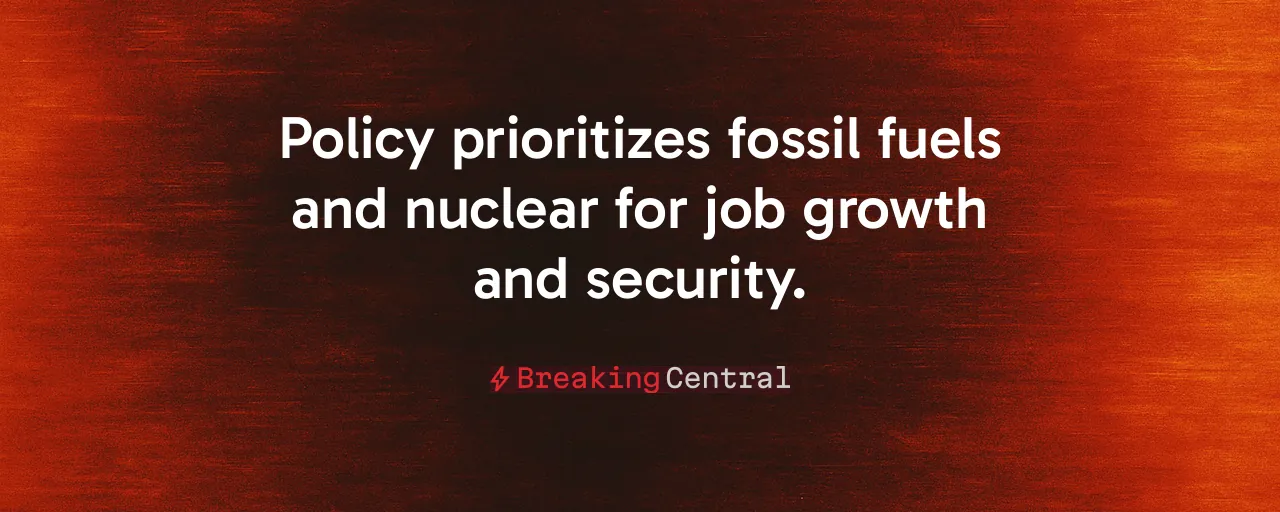A Bold Shift in Energy Policy
President Donald Trump signed an executive order on July 7, 2025, that halts federal subsidies for wind and solar energy, redirecting the nation's focus toward reliable, dispatchable power sources like natural gas, coal, and nuclear. The directive, rooted in the One Big Beautiful Bill Act, signals a decisive pivot in how America powers its homes, businesses, and industries. It aims to address long-standing concerns about grid reliability, national security, and economic vitality, issues that have simmered under the surface of energy debates for years.
This move responds to growing unease about the vulnerabilities of an electrical grid increasingly reliant on intermittent energy sources. The Texas cold snap in February 2025, which left millions without power during a brutal freeze, exposed the risks of leaning too heavily on wind and solar without adequate backup. The executive order seeks to correct this imbalance, prioritizing energy sources that can deliver power consistently, regardless of weather or time of day.
Beyond reliability, the policy tackles the economic and security threats posed by foreign-controlled supply chains. With China dominating over 70 percent of global polysilicon and rare-earth materials critical for renewable technologies, the administration argues that continued reliance on these sources undermines American sovereignty. The order tightens restrictions on foreign entities, ensuring domestic control over the nation's energy future.
Grid Reliability Takes Center Stage
The push for reliable energy sources stems from hard evidence. The North American Electric Reliability Corporation's 2025 Long-Term Reliability Assessment warns that rapid retirements of coal and gas plants, without sufficient replacements, could lead to regional power shortages. In Texas earlier this year, wind turbines froze, and solar output plummeted, contributing to widespread outages. These events underscored the need for baseload power, plants that can run continuously to meet constant demand.
Nuclear energy, alongside natural gas and coal, emerges as a cornerstone of this strategy. Advanced reactors, including small modular designs, promise safer, more efficient power generation. The Department of Energy's 2024 study on grid-forming inverters suggests renewables could play a larger role with better storage, but current technology limits their ability to provide firm capacity. For now, dispatchable sources remain the backbone of a stable grid.
The economic stakes are equally clear. The Congressional Joint Committee on Taxation estimates that repealing wind and solar tax credits will save taxpayers over $180 billion by 2034. These savings, paired with investments in domestic energy production, aim to stabilize electricity prices and shield consumers from the volatility of global fuel markets.
Securing the Nation's Economic Future
Energy policy is economic policy. By prioritizing fossil fuels and nuclear power, the administration seeks to unleash a wave of job creation and industrial growth. Fossil fuel producers, miners, and nuclear suppliers stand to benefit, particularly in rural and industrial heartlands. Manufacturing unions, representing workers in both traditional and emerging energy sectors, see opportunities in expanded drilling, pipeline construction, and reactor development.
The policy also aims to improve America's trade balance. Expanding liquefied natural gas exports and fast-tracking drilling leases will position the United States as a global energy leader, reducing dependence on foreign oil and gas. This shift strengthens ties with allies, who rely on American energy to counter hostile powers, while fostering international stability.
Critics argue that cutting renewable subsidies could raise electricity costs by increasing reliance on natural gas, which faces price swings. The administration counters that streamlining permitting for pipelines and reactors will keep costs down, with long-term investments in domestic production insulating the economy from global disruptions.
Balancing Security and Innovation
National security underpins this energy overhaul. Dependence on Chinese-controlled supply chains for renewable technologies poses a strategic risk. The executive order's tightened rules on foreign entities aim to protect critical infrastructure and ensure that America's energy sector remains in American hands. This aligns with bipartisan calls to secure domestic manufacturing and reduce reliance on adversarial nations.
Innovation remains a priority. The National Energy Dominance Council, established earlier this year, is tasked with cutting bureaucratic red tape and fostering private-sector advancements. Emerging technologies like carbon capture, geothermal, and clean fuels such as biodiesel hold promise for balancing reliability with environmental goals. These solutions can integrate into existing infrastructure without compromising grid stability.
Rural communities, often home to energy projects, stand to gain from this shift. While wind farms and solar arrays have sparked debates over land use and aesthetics, expanded fossil fuel and nuclear projects could bring jobs and infrastructure to these areas, provided environmental safeguards are maintained.
Looking Ahead With Confidence
President Trump's executive order marks a turning point in America's energy journey. By prioritizing reliable power, economic growth, and national security, the policy addresses immediate challenges while laying the groundwork for long-term prosperity. It reflects a belief that energy independence is a fundamental necessity for a strong nation.
Challenges remain. Legal battles over the order's implementation are likely, with opponents citing potential job losses in the renewable sector. The administration's focus on workforce programs and technology-neutral incentives, such as those for advanced nuclear and storage, offers a path to bridge divides. These efforts aim to ensure that workers in all energy sectors have opportunities in a changing landscape.
The stakes are high, and the potential is equally significant. A robust grid, powered by American resources and ingenuity, promises to light the way for a future where energy fuels progress and stability. This bold vision, grounded in practical realities, invites Americans to rally behind a shared goal: a nation that stands tall, powered by strength and stability.
